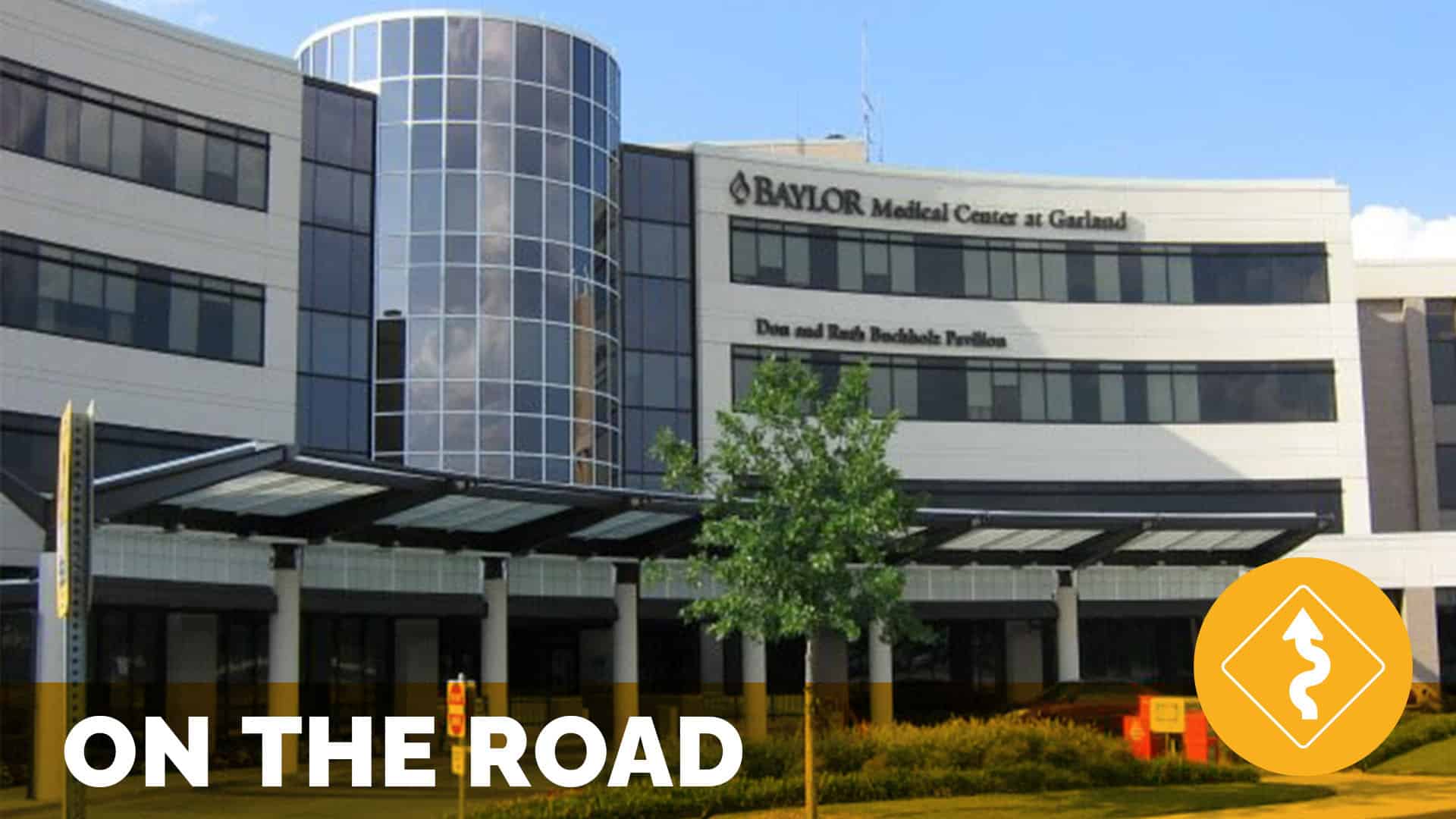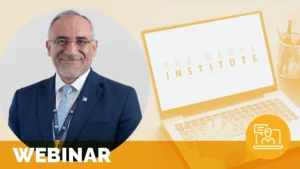A System’s View on the Continuum of Care

On the Road with Baylor Health Care System, Dallas, TX – November 2010
by Jason A. Wolf, Executive Director, The Beryl Institute
Framing the Journey
The inaugural edition of On the Road with The Beryl Institute literally became just that – a two-day road tour. Our host for this month’s visit, the Baylor Health Care System in Dallas, TX, has one of the most comprehensive patient experience efforts I have had the opportunity to encounter. To best see it in action our journey did not focus on only one facility, but rather on the systemic approach they take to drive their daily commitment as an organization focused on the patient as the center of all they do.
Over the two days I spent in the system with Veronica Cochran, Director of the Office of Patient Centeredness, we traveled over 100 miles around the Dallas metroplex to explore what “putting the patient first” encompasses for Baylor. The outcome was a broad and powerful view of how a well-coordinated effort can lead to the successful management of the patient experience continuum before, during, and after care.
The framework for my visit was shaped by Baylor’s “Circle of Care,” which showed up at every stop along the way. It is built upon four pillars including people, quality, service and finance. What stuck with me was a resounding and shared response to a question I heard asked at the system’s new hire orientation program. The question asked of the almost 100 participants in the session was “who is the center of our focus?” (i.e. at the center of the circle of care). The response was loud and clear – “the patient.” Not too bad for a room full of people on their very first day of work.
The Start of the Continuum
The Right People
The aligned response of these new employees was a telling sign of an organization committed to finding the “right people.” Baylor’s efforts in ensuring success in all patient encounters starts with the selection of staff. Melissa Winter, Chief Nursing Officer and VP of Patient Care Services at The Heart Hospital Baylor Plano (pictured right), offered that at the foundation of their success are the people at the bedside. She added it is not just the people, but “it is about choosing the right people.” While not the before stage of an individual patient experience in the traditional sense, this is the critical first step in the Baylor system. Identifying the right people is the key to any patient experience process and central to the success of Baylor’s efforts.
With a framework of behavior-based interview questions, potential staff members are screened not only for their skills, but also for their compassion and commitment to service. “We ensure people want to be here both head and soul,” Winter stated, offering that they do not settle in making selection decisions. “Our selection process is all about patient-centeredness, and those that don’t fit either change or are weeded out.”
System-Wide Orientation
This commitment to the right people and their impact on the patient is fundamental to the Baylor message from day one. All employees in the Baylor system spend their first two days in a system-wide orientation (held weekly) where they are addressed by system executives and taught by peers about the fundamentals of being part of the Baylor community. The message around the role of every staff member in ensuring a positive patient experience is reinforced in this session that includes everyone from support staff to RNs and touches all aspects of Baylor’s system beyond hospitals. Judy Cash, Director of Perioperative Services at Baylor University Medical Center, one of the co-facilitators of the orientation, was very intentional in ensuring all participants knew that regardless of role “everything that you do impacts the patient. You touch the patient whether directly or indirectly in each of the roles you play. We all make a difference every day.”
Diane Whiting, Director of Workforce Strategy, and the leader responsible for the system-wide orientation, reinforced this message saying that in hiring for fit, “we hire attitudes.” She added that the orientation “is a means for every staff member to truly experience the culture of the Baylor system, to learn what to expect in their roles and to understand what it is we expect from them. It is the bedrock of all we do.” Diane also offered that each individual is required to document and sign a page in the orientation manual that states their personal commitment to the patients they will serve. This step begins a process of sustained support for this message to last well beyond this orientation.
Beyond the initial two-day session, there is usually a third day of facility-based orientation to integrate new hires into their facility. In addition, there are two critical check-points at 30 and 90 days where a new hire’s manager can revisit expectations and commitments to reinforce messages they learned, answer questions they have and ensure they are engaged in their new role. These meetings are complemented by required monthly rounding on direct reports to ensure sustained focus on the core system messages and alignment of actions with Baylor’s commitment to the circle of care.
The Baylor system provided a powerful and bold message in suggesting these steps as the first in the continuum of the patient experience. It is clear that Baylor is unwavering in its belief that its people are the key to an excellent patient encounter.
Foundations of support
While ensuring the right people are on board may seem like a simple solution, it is an effort that requires an ongoing commitment of time and resources at all levels. The Baylor system is continuously developing its support infrastructure to ensure a focus on the patient is central to all it does. Melissa Winter suggested that at the core of their success has been the culture itself, stating unequivocally “it’s about culture.”
Quality Improvement
While the system overall has a number of efforts to create foundations of support, one significant component (and one that I was fortunate to experience) was the annual Quality Improvement Summit. The summit exemplifies a system-wide commitment to measurable process improvement in all four pillars of the Baylor Circle of Care. With over 50 nominations describing top process improvement projects from facilities across the system, these efforts provide clear paths to a commitment to delivering unparalleled patient care. More impressive in the process is that these often end up defining a new proven practice that is adopted across the system, leading to significant service gains, quality outcomes or financial savings.
The awards were not simply about the improvement itself, but about what the suggested improvements did to provide a positive change to the way things are done to improve the overall experience of patients in the Baylor system. My observation of this event was of an organization understanding the importance of a systemic focus on improvement, the potential impact of new ideas and shared practice and ultimately the value of recognition and celebration. I would suggest this is a model that many facilities and systems should examine further as you look for ways to create a sense of ownership in improving quality, outcomes and overall service in your organizations.
Patient and Family Advisors
In contrast to the very ‘visible’ improvement effort of the Summit, the Baylor System has recently dedicated resources to engaging the voice of patients and family members in system efforts. The practice of adding patient and family advisors to standing committees, task forces and councils, has been increasing interest in facilities across the organization. While not yet a requirement to have this representation, more leaders are inquiring on how to start this process.
Lona Bryant, Patient and Family Advisor Coach (pictured left), established an overall process including how to select and onboard advisors to these work groups. She offered that the value of the advisors serves two key purposes. One is “that voice of the advisors enable us to see things we would not otherwise see and consider things we would not otherwise consider in providing the best service and care possible.” A second purpose discovered in the implementation process is “that the advisors also get to see what we do and what we go through in providing care.” The advisor program is a strong example of how to ensure the voice of the patient is not only heard, but also acted on throughout the care process.
Having the right people to deliver on the experience and incorporating the voice of the patient are two critical areas. But in the delivery of care you must still concern yourself with the outcomes of the experience. This is not in the traditional sense of your job in how you make patients “better,” but rather it is in how you help patients get better and your accountability to ensure that care does not end once you leave a facility.
I had the privilege of visiting with Barbara Vaughn, Director of Acute Care at Baylor Garland, as the last stop on my 100-mile journey. It was fitting that the topic we were exploring was Care Calls, a post-discharge phone call process. (Interestingly enough it was a Patient Advisor, Don, who provided the new name for these discharge phone calls. He suggested “you are not calling about my discharge, but you are truly calling because you care about me as a person.” (Needless to say, the name stuck.)
While the use of post discharge phone calls is widely recommended and many attempt the process, one challenge remains and appears again and again across many of the facilities and systems I encounter. While staff members are often asked to complete this task, it rarely is done or if it is, is rarely done effectively. This creates significant service, quality and financial issues for hospitals, given the looming standards and reimbursement implications for readmissions and other post-discharge adverse effects.
Vaughn shared the story of a process redesigned and supported by technology to make a significant impact on post discharge follow-up through Care Calls. The process is simple. Four staff members are assigned specifically to own the phone call process. While officially part of the facility’s float pool, they are dedicated resources committed to the Care Call process. These individuals target 100% of all discharges from both inpatient and the emergency department with a goal of contact within 24 hours of leaving the facility. It is important to note that contact is not simply attempting a call or leaving a message, but it is having a direct conversation with an individual.
What is powerful about the Care Call process is that it is not the typical ‘service check’ to learn how someone’s experience was. The process has evolved into both an educational opportunity for the patient as well as a continuous improvement data collection point for the facility. Vaughn outlined the process, stating, “Aside from the standard inquiry into the visit, patients are now asked about prescriptions, any follow-up doctor’s appointments, questions on discharge instructions and other pertinent information from their chart.” She added, “What is powerful about the process is that the callers do not simply end the process at the end of the phone call. They follow-up with any feedback that needs to be provided to a unit and work to resolve any issues raised by the patient regarding their visit.” It was clear that the process was not the typical recognition of the need of a call, but it was the commitment of these individuals to use the data collected to make continuous improvements in real time.
The power of this process is that again, it shows that the patient experience from Baylor’s perspective is not simply about the what (in this case, just having a call made), but rather it is about a commitment to how it is being done and at the foundation of action are the people accountable for ensuring the process is complete.
Conclusion
I simply scratched the surface of what this organization is doing in its commitment to patient-centeredness and the patient experience. But even in this simple glance at a complex and committed organization, you can begin to see the fundamentals of how Baylor Health Care System influences the ability to provide an unparalleled patient experience. The processes shared here are probably not foreign or earth shattering to many of our readers, but the focus on and energy directed towards these efforts is significant. At Baylor they have underscored a commitment to people and culture as fundamental to driving the best patient care. They had indentified core processes both internally and patient-facing to make a positive difference at every potential touch-point and have relentlessly maintained an effort on striving for the outcomes they know they can achieve. Veronica Cochran shared that key to their effort is that everyone is aware of their “line of sight” to the patient and that they do not forget, regardless of their job, that they have an important role to play in providing the best patient experience possible.
The best experience possible is an operative phrase here. Melissa Winter was clear in saying “We don’t just do targets.” There is a constant effort to reach beyond what is possible to even higher levels of performance. This was evident in the results of the winning projects in the Quality Improvement efforts, it was exemplified in the impact that patient and family advisors have had and it was seen in the efforts the cadre of Care Call teams to ensure not only improved patient contact, but overall excellence at their facility.
It even appeared in how Baylor wished to highlight the commitment they have to their program. Over 100 miles of patient experience commitment were explored and I know there are many more miles to discover. It was an energizing and exciting way to begin our journey as an Institute…on the road. Many thanks to all the members of the Baylor Health Care System who shared their time and stories.
Related content
-
 Culture & Leadership | Infrastructure & Governance
Culture & Leadership | Infrastructure & GovernanceAligning Experience to Drive Scalable, Sustainable Change
In today’s complex healthcare landscape, turning insights into meaningful action is critical. This webinar explores how experience alignment tools like journey maps, service blueprints, and prioritization frameworks can uncover hidden risks, align diverse stakeholders, and spark lasting transformation. Attendees will learn how these tools connect clinical, operational, and digital touchpoints, creating a clear, shared understanding
Learn more -
 Infrastructure & Governance
Infrastructure & GovernanceHidden Opportunities to Design a Better Experience
Observational-Based Patient Interviewing and the Skeptic’s Lens are two key tools used to uncover insights into the kinds of behavior that create a “wow” experience.
Learn more -
 Culture & Leadership | Infrastructure & Governance
Culture & Leadership | Infrastructure & GovernanceCrafting a Patient Experience Program While Commissioning a Hospital
Global Headliner Webinar Series (Complimentary) – Whether you’re building from the ground up or refreshing your current approach, join this webinar for practical guidance for making patient experience an integral part of your organizational culture. • 12:00 PM AST (Arabia Standard Time) • 5:00 AM EDT (Eastern Daylight Time – New York) • 09:00 UTC
Learn more
